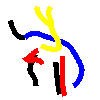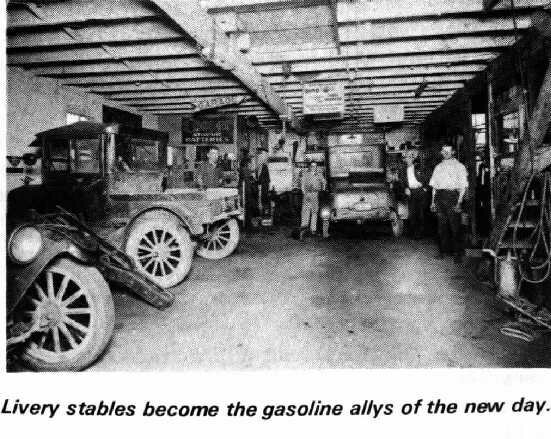|
The Oil Boom days burst upon us suddenly and lasted many years. As it slowly receded, it left a heritage of diversified industry, a skilled work force, and a strong, solid, stable citizenry. Fortunes were made and fortunes were squandered and some made no fortune at all. For some the silks of riches became a way of life. For others the silken gowns became a keepsake in the attic trunk.
For the town as a whole, it was as Bob Gordon had said, "It'll never be the same again." Things began to happen. Old buildings of pre-Civil War days came down and new brick business houses began to line Spring Street. Gas lights illuminated the entire downtown and much of the residential area. Water mains began to provide running water to householders replacing the back yard well so often dug within a few feet of the horse barn. Streets were improved. Most of them had been graded with a gravel surface. Now the heavy oil rigs were cutting deeply through the shallow stone making a sea of mud during bad weather. In 1895, the principal part of Spring Street was dug out and filled with two feet of gravel. On top of this was laid the first brick pavement. Saint Marys had a new look ! An interesting observation on our older days pertains to our side walks. From early times the merchants had provided board walks in front of their stores, but even then the town had a few rowdies. The "boys," being out a little late and feeling none the worse, frequently rode their horses onto the sidewalks to avoid the mud in the street. Next day the merchant would find his walk in splinters. He soon learned to build the walk in sections so that when he closed his store at night, he could stack the sections of walk up and out of the way. The age old expression "they take up the sidewalks at night" was a common description of many a town! An electric lighting plant was built first where the Union Hall is now located. In the beginning, its customers were downtown stores and "electric" was furnished from six to ten o'clock every night except Sunday. Within a few years, the demand for more service was so great that the city bought out the local company and moved the plant to its present location. Saint Marys was one of the first of it's size to have its own electrical service and is still one of the few not dependent on distant sources or power trusts. At about this same time, the telephone came to Saint Marys. A group of private investors looked over many ideas in this new means of communication. Most systems had an operator or "central" on duty who took your call and connected you to your party. A new system was just being invented called a dial system. This required no operators. No one knew who was calling whom and no one could know what you were talking about. Saint Marys became the first in Ohio to use the dial system and one of the first in the nation. The rest of the world is now catching up with our beginning! |
Education and sanitation also progressed. The East and West schools were built at Spring and Pine and at Spring and Wayne. The West School had a clock tower that for years told time by its four faces and hourly strikes. Its mechanism has been preserved and some day, hopefully, will be again a beacon to our city. A sanitary sewer system was also extended to bring the convenience of indoor plumbing and reduce the dangers of infectious diseases so frequently stemming from the old out house.
Saint Marys burst proudly and brilliantly into the Twentieth Century. Electric street lights now illuminated the village and in 1900 came the Electric Interurban known as the Street Cars. Again as Charlie Murray had said, "Transportation—vou cotta have." Now with the cars, travel to Celina, to Fort Loramie, to Lima or Dayton via Wapakoneta was swift, silent, clean and available every hour on the hour. To supply electricity to the new line, a huge power plant was erected between South Wayne and South Ash Streets. Its size and its eight tall smoke stacks was often passed off to ignorant visitors as our cities own pipe organ! Steady growth marked the next few years of Saint Marys as a new Chain Factory entered the industries along with the Easy Washing Machine Company. Garages replaced livery barns. Filling stations began where blacksmith shops had been. The town grew into a population of over 5,000 and thereby became legally a city. The Post Office started delivery of mail to every house in town, and within a few years the Fire Department got a new motorized truck to replace the colorful and beloved horses. |
|
33
previous page |
34
next page |



virtual St. Marys, Ohio
© 1999 ridertown.com
Aloha
